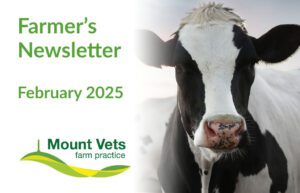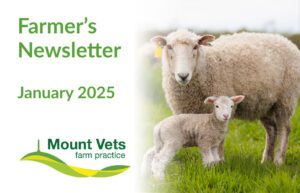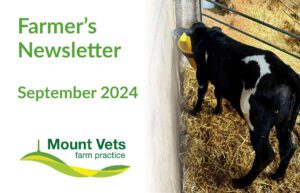June 2023
Here is the latest from our farm team at Mount Vets. If you would like any further advice or would like us to cover something in the next newsletter, please call us on 01823 662286 or contact us here.
We want to hear your feedback… Leave us a review!
Our new website is now live. We hope you enjoy an easier navigation through the pages and have had the opportunity to look at the new information that we have added. We value your feedback and comments and would appreciate if you could take the time to leave us a review! Please follow the link to share your thoughts. https://g.page/r/CTSyP_UXvSPIEAI/review
Johnes Disease
Johnes is an extremely important infectious disease of cattle, especially dairy cattle. It can be quite a complex disease to understand and deal with so over the next couple of months, we are going into detail regarding all things Johnes.
Most of our farms are required now to undertake in a minimum amount of testing for Johnes per year and have a control strategy in place to reduce the prevalence of Johnes on farm or reduce the risk of it entering the farm if not already present. This scheme is known as the National Johnes Management Plan and is a mandatory part of the Red Tractor standards for Dairy.
What is Johnes?
Johnes is a chronic wasting disease caused by the bacterium Mycobacterium avium subspecies paratuberculosis (MAP). Many people will be very familiar with this family of bacteria as it also contains Mycobacterium bovis which is the causative agent of bovine TB.
Most animals become infected early in life but don’t show clinical signs until later in life. It is possible for adult cattle to become infected with MAP if there is a significant amount of infectious material in the environment.
Animals that are clinically affected by Johnes have thickened gut walls and therefore struggle to absorb nutrients from their diet correctly. They will eat normally but will have profuse, watery diarrhoea and will lose weight very rapidly, eventually leading to death. If caught early enough, these animals can be culled but often end up not being worth much due to the rapid loss of condition.
Much like TB, most Johnes-infected cattle don’t show clinical signs of disease until later in the progression of the disease. The cows that are showing clinical signs of Johnes will be the tip of the iceberg of infected cows in the herd and they represent a small percentage of total infected cows. Therefore, if a farm is experiencing multiple clinical cases, it could indicate that there is a major issue with Johnes hiding below the surface.
Why should we control Johnes?
Johnes has an obvious negative impact on the welfare of clinically affected animals but also on the efficiency/productivity of infected cows that aren’t showing clinical signs yet. Higher rates of lameness and sub-clinical mastitis are associated with infection with Johnes that hasn’t reached the clinical stage yet.
Controlling Johnes on farm is a multi-year process but can be achieved through a combination of testing and management strategies. Next month we will be looking at how to reduce the risk of Johnes entering a herd and the different tests we can use to diagnose it.
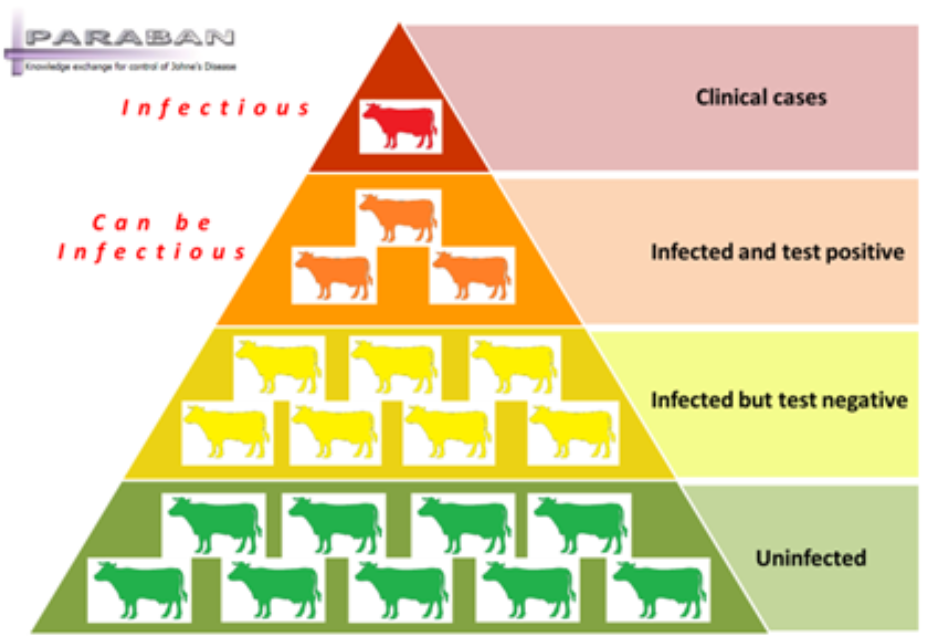
Footrot - To Trim or Not to Trim
In the days of yore, routinely foot trimming the flock’s feet once or even twice yearly was believed to help keep the claws in shape and promote better foot health. This was probably because those farms with higher lameness incidence were noticing a higher proportion of ewes with claw overgrowth but as we have realised recently, this was actually a classic “chicken or the egg” scenario. A mild degree of claw overgrowth can occur simply from soft underfoot conditions resulting in reduced wearing as the animal walks, however the more severe overgrowth is commonly as a result of chronic lameness rather than the cause of it, resulting from the ewe “favouring” the foot and reducing wear over time. Overgrowth when trimmed away will usually regrown within around 6 weeks if the animal remains lame but will be worn off naturally if the condition is effectively treated and the foot returned to pain-free use.
A 2010 study comparing different treatment techniques for footrot found that trimming was associated with higher levels of lameness and increased recovery time. The study found that ewes treated with a tetracycline spray, long acting oxytetracycline and foot trimming resulted in almost half the recovery probability of the same treatment without the foot trimming. Footrot has the best chance of successful treatment outcome if treated within 3 days of going lame, after this the chance of rapid lameness resolution begins to fade. Treat with tetracycline spray on all four feet and a long acting oxytetracycline, repeated 2-3 days later if still lame. CODD is best treated with oxytetracycline spray on all four feet (spray the top of the hoof where it meets the hair as well!) and either a long acting amoxycillin given twice at a two-day interval, or a long acting macrolide.
A recent study of 532 farms in 2018-2019 surveyed farmers on their use of foot trimming as a part of their lameness control strategy. 51.3% foot trim only when lame, 46.8% trimmed mis-shapen claws (lame or otherwise) and 20% are still routinely foot trimming annually or twice yearly.
Annually trimming the entire flock’s feet, healthy feet included, represents a massive opportunity to increase lameness in the flock. Most causes of lameness in sheep are infectious in nature, the most common being footrot, CODD and scald/strip. These are bacteria that survive quite well in the environment, so running them all through the same handling system gives the bugs ample opportunity to find new host feet. Using foot shears to trim up the feet of most or all ewes coming through the race gives the bugs further opportunity to spread. Dunking the shears in some disinfectant between feet is also probably not as effective as you might hope as the bacteria can survive quite happily in muck and hoof fragments still stuck to the shears that would realistically need to be scrubbed off. With hundreds or even thousands of ewes to get through in a day or two, this is also necessarily a job that might require a degree of rushing – it is very easy to remove excessive amounts of horn and over-trim toes, hand delivering certain bacteria to exactly where they want to be.
Climate Farm Demo
We’ve been very impressed and inspired by many of our farmers making serious inroads to reducing the carbon footprint of their farm businesses over the last few years, many of them doing so entirely out of their own initiative and motivation. Despite the unfair malignment of an often misinformed public, you could meet fewer people more passionate about the Great British countryside and wider climate than its tireless stewards.
We have been asked to raise awareness for a new project run by the IfA, namely Climate Farm Demo, which we are proud to say would suit several of our admirably climate-conscious clients. This European-wide project will build a network of 1,500 climate demonstration farms (130 of which in the UK) to showcase best practice in climate smart farming – something that is already shaping consumer demand to an unignorable degree.
Each participating farm will benefit from a climate smart advisor, who will work with each business to produce a climate adaptation and mitigation plan which is tailored to the farm. In addition, ideas and insights can be shared through discussion groups for participating farmers. In return, host farms will host three demonstration events for the wider farming community across six years in order to share their experiences and hopefully inspire others!
Here are just a few of the possible options for involvement:
Grassland management, forage production, soil health, agroforestry, water management, herd management, manure storage, additives to reduce enteric methane, rewarding mechanisms and more!
If you would like to know more about the project, please get in touch with the climate smart farming team at:
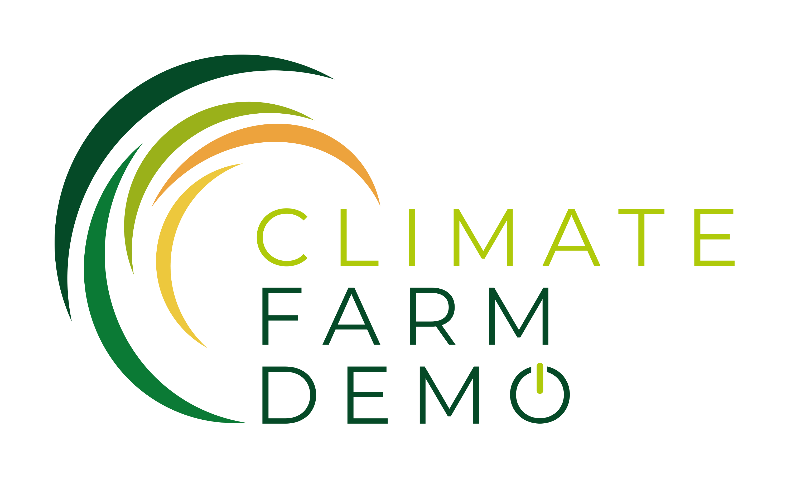
Upcoming courses
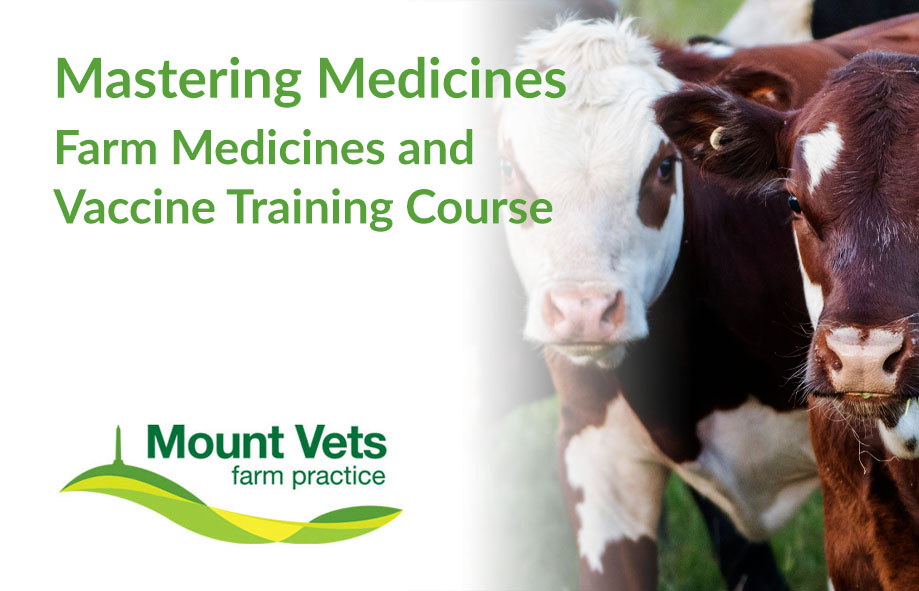
MASTERING MEDICINES
13th June 2023 | 12:00pm – 3pm
We are running another course for anyone still needing to complete a Mastering Medicines course that fulfils your Red Tractor farm assurance requirements to have undergone further training in the correct administration, use and storage of medicines.
At least one member of staff that is responsible for administering medicines per farm must have attended this specific course to avoid non-compliance.
This next course is being held from 12:00 PM until 3:00 PM at the Colliton Barton Training Centre on Tuesday 13th June.
Please ring the practice to book your place on any of our courses on 01823 662286 or email farm@mountvets.com
Have a question about any of the topics covered in this newsletter?
If you need any assistance with the topics covered in this newsletter, please do not hesitate to get in touch with our experienced farm vets who will be able to help. Call 01823 662286, or contact us here.
